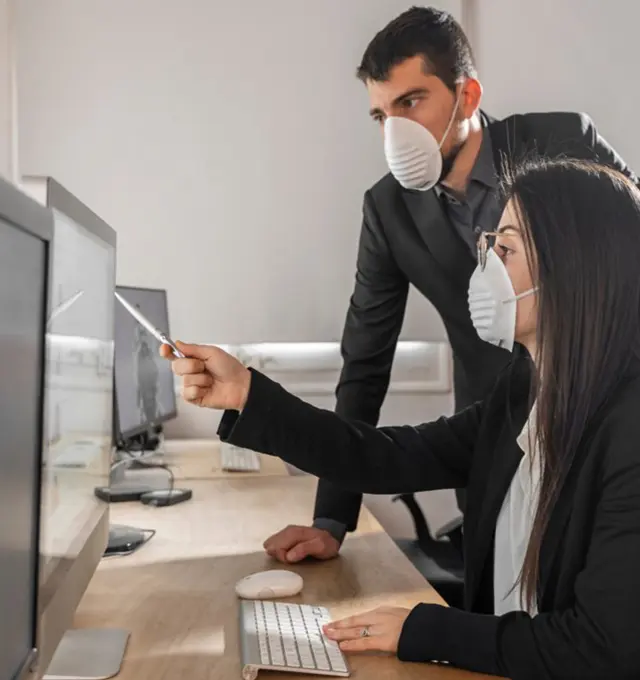The Five W’s of the New Office: Workplace Reentry After COVID-19
COVID-19 has dramatically changed the way we work, accelerating some trends already in place and triggering others. The response from company owners has varied. While some moved swiftly to accommodate long-term work-from-home systems, others employed temporary stopgaps and called employees back to the office as soon as restrictions were loosened or lifted.
Employers across the board wonder what the workplace will look like post-COVID and how they can create a company office that will keep people safe, accommodated and enthusiastic about their work. While no one knows exactly what the future holds, let’s break down the five W’s involved: who, what, where, when and why.
Who?
When strategizing how your office space will change, make sure your human resources and IT managers are involved. Stay-at-home orders have revealed inequities in who can work from home and who can’t. Some jobs can’t be done from home; some people don’t have space to work from home; some people don’t have the technology to work from home; and some people have significant distractions when working at home.
On the opposite side of the spectrum, some people and tasks are much more efficient under the work-from-home model. Your team needs to consider specific situations and scenarios before determining your office space needs.
If your company institutes a full or partial work-from-home model, your human resources and IT professionals will also be helpful in creating a digital company culture to compensate for the lack of personal interaction.
What?
Most surveys indicate that companies will maintain some kind of office space, whether it is for 100% occupation, just for meetings or somewhere in between. But what will that look like?
Company owners and their landlords must ensure that risks are mitigated so that employees feel comfortable coming back to the office, no matter how long they plan to stay there.
Regular cleaning, elevator protocols, proper ventilation and use of air filters are paramount to creating a safe office. Whereas many of these functions were previously hidden, people want to know about and see them now.
California’s focus on air quality and efficiency mean that newer or recently updated buildings have an advantage because they already have a high standard of air filtration compared to most buildings in the rest of the country. Landlords and firm leaders will want to communicate these standards and other safety systems to everyone working in the building to provide peace of mind.
Space planning is another important consideration for creating a safe workplace. With so much uncertainty about the future and timing, workarounds make more sense for now than a full redesign, in most cases. Signage may factor large in this effort, as may workstation reconfiguration.
Where?
To maintain social distancing, some firms have no choice but to have part of their workforce work from home, but we’re lucky to have a third option in San Diego. We have ideal weather for indoor/outdoor lifestyles. Some of our work to help firms prepare their spaces for their employees’ returns includes leveraging outdoor spaces. (Here’s another great example of why you need your IT manager involved in your strategizing.)
Not all office buildings have operable windows for fresh air circulation (which can challenge energy efficiency systems), so providing a balance of indoor and outdoor workspace can make your team feel more comfortable.
Your space planning should consider those working from home, too. You still need to ensure that they have the ergonomic setup they need, property connectivity and essential equipment.
When?
Landlords and tenants who need to redesign their office spaces – whether it’s a full redesign, a systems upgrade or activating an outdoor area – should do so soon. The permitting process is slow, and materials costs are rising rapidly, due in part to international supply chain uncertainty.
If you delay, you may not get what you want, you may pay more, or both.
Why?
The why of re-strategizing your office space goes beyond the practicalities of avoiding virus transmission. Even before COVID-19, most employers wanted their workspaces designed for business operation flexibility.
One must always assess the life span of a perceived change and plan accordingly. Creating flexible office space has been one way to do that. But now, employers must figure out how to build a physical space and a digital community that work together.
Early in the pandemic, companies compensated for a lack of in-person work culture by shifting to a digital culture. Now companies must determine what parts of that digital culture they want to keep when they return to their physical spaces. This reconciliation will become part of the company’s story. It is a restructuring that may not have happened without the pandemic but could truly represent the workplace of the future… and the future is now.

